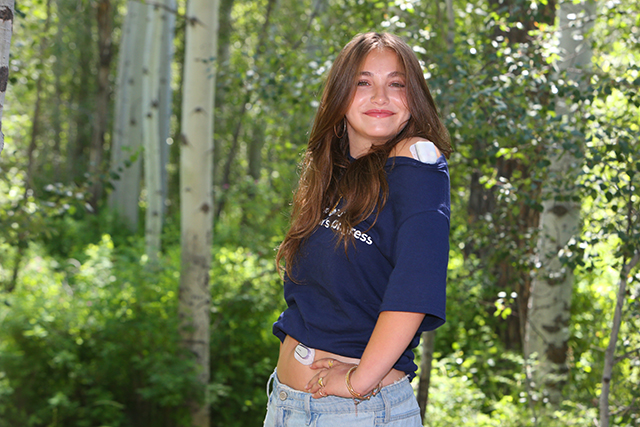Exotic bird rescue opens near Tumalo
Published 12:00 am Saturday, February 24, 2018

- Donna Costley gets friendly with a lesser sulfur-crested cockatoo named Angel at her Second Chance Bird Rescue on Wednesday.(Andy Tullis/Bulletin photo)
Ear-piercing chatter and squeals that rang from inside Donna Costley’s steel building sounded like a preschooler’s well-attended birthday party. Stepping inside revealed the noise was the pandemonium of 60 exotic birds — the residents of Second Chance Bird Rescue, north of Tumalo.
The chatter crescendos when a new visitor enters the doorway. Bursts of indigo, tropical green and orange plumage greet the eyes while chirps, clicks and chatter assault the ears.
Trending
“Hello! Hello!” a parrot called out.
The birds craned to eye the stranger. They either bobbed with agitation or preened for attention, sometimes extending talons through the wiring of their cages.
All of the birds have back stories. Some have had abusive experiences with people. Others have outlived a loving owner or have become incompatible with an owner’s new spouse or child. What these exotic birds all have in common is a strong need for social interaction, if not with other birds then with a person who can give them perhaps more stimulation and attention than a common pet, according to exotic bird experts.
“Caring for a bird is not like having a dog or cat,” said Costley. “Having a bird is like living with another human being. They’re like a roommate.”
Costley founded Second Chance Bird Rescue near Sacramento in 2014 before relocating to an 11-acre Central Oregon ranch in September 2017. It’s one of two exotic bird rescues in Oregon and the only one east of the Cascades.
Costly, 64, retired in 2014. She worked a high-stress job as a program analyst for the mental health department at a Veterans Administration office.
Trending
In 2012, she lost her middle son, Christopher Schmidt, his wife and three children in a car crash. She stopped working when the combined stress and mourning began to harm her health.
“The birds gave me a reason to get up in the morning,” she said.
A new start
Last year, Costley found homes for 46 birds she’d rescued, including several of the 35 exotic birds she took into her shelter in 2017.
Some birds, like the two Amazon parrots, are in their mid-50s and of them is 79. Many parrots live for 40 to 60 years. Cockatoos and macaws can live 80 to 100 years. Some new owners take this for granted — birds may outlive them and should be written into wills, Costley said.
The Costleys adopted their first bird in 2008 when their son, Jon Borden, took a strong interest in a green-winged macaw. A high school sophomore, Borden said he would fix his attendance record if he could care for the bird. When he joined the Army after graduation, Costley took over custody. Today, the large, red-bodied bird, named Trouble, can be found on a perch near the door of the nonprofit.
Neither Costley nor anyone else collects a paycheck. Costley relies on adoption fees that vary depending on the bird. A surrender fee is $100. Along with donations from businesses like Costco, she judiciously shops for $1,000 worth of fruits and nuts to feed the birds for a month.
Costley’s husband, Gary, who still lives in California, stocks up on walnuts when they’re fresh each September. Nuts in a shell are no match for the beaks of these tropical birds, Costley said. The rest of their diet is rounded out with nutrient- and vitamin-rich pellets.
Each morning, Costley and any of three regular volunteers feed the birds an assortment of treats like carrots and peas, orange slices and cheddar cheese. They tidy the cages and replenish them with bird toys and cardboard boxes to fuss with. These simple distractions mitigate self-destructive behavior like feather plucking or worse.
Costley is looking for additional volunteers, particularly a grant writer. She is also hoping to connect with local veterans to help care for the birds.
On the mend
One chatty, yet troubled bird is Hollywood, an Amazon parrot who has a yellow face and a green body the size of a pineapple. While he doesn’t let anyone hold him, the parrot often sits by the edge of the 6-foot-tall cage he shares with several other Amazons — one with whom he’s bonded — and titters away.
“Hollywood’s got a potty mouth,” Costley said. She explained that Hollywood and three other parrots had been turned in by a woman. She recovered them from an Arizona florist who kept the birds in a small, filthy cage in a back room. Hollywood’s propensity for foul language owes to the verbal abuse the owner hurled at the birds.
“Shut up. Shut up,” Hollywood said at one point with varying inflections. “Shut up.”
He also uttered four-lettered insults. Just as common, however, are his pleasant-sounding, garbled monologues, which resemble distant phone conversations.
“He’s just back there talking and singing,” Costley said. “He’s like a record player. But you can tell he is so happy to be in with the other birds. They definitely have feelings.”
A chatty predilection
Several other bird species, such as those in the Corvidae family — which includes ravens, crows and starlings — can repeat sounds.
Parrots are the reigning sound replicators. They have a more complex “song system” in the brain than other birds, according to a 2015 study by Erich Jarvis, a neuroscientist and vocal learning expert at Duke University. Tim Wright, who has since collaborated with Jarvis, is a biology professor at New Mexico State University and leading expert on parrot vocalization. When Wright discusses sound-mimicking birds, he likes to begin with a central question: Do parrots understand what they’re saying? Not exactly, he said. It’s more a matter of having a loose association.
“They pick things that are associated with high-energy or high-emotional situations,” Wright said. “I couldn’t think of anything more highly emotional for a poor parrot than having someone screaming at it.”
So are Hollywood and other birds reliving their abuse by repeating related phrases and words? Wright said it’s still not clear.
“They’re getting that someone (didn’t) like them. They tend to mimic high-intensity vocalizations that are used in high intensity interactions,” he said.
“That’s why they also pick up sounds like dogs barking, arguments, the door bell ringing — or profanities.”
In a natural setting in the tropical canopy with their flock, parrots make consistent soft calls to each other to keep tabs on their whereabouts. They alert each other of predators, such as an eagle or a leopard.
They don’t mimic other species in the wild. They do this in captivity because, stripped of a flock, parrots still have a powerful urge to create social bonds, Wright said.
“They do so by learning the sounds that others are producing,” he said.
“When the only bonds available to them are people, they will try to learn what other people are saying. They are trying to become a person in our social group,” Wright said.
“Just as a dog licks your hand, these birds try to (integrate) themselves in a different way.”
A second chance to trust
Angel, a lesser sulfur-crested cockatoo, was brought to Costley by a man who had bought the bird for his wife when they got married.
He grew to despise the bird, throwing apples in its otherwise empty cage.
Costley fitted the blue jay-sized white bird with protective apron that prevents Angel, once very distressed, from deepening the hole she had carved into her featherless chest with her beak. Now, Angel loves returning salutations while bobbing her head and displaying her yellow head feathers.
“Hello? Hello! Hel-looo,” she repeated. Some iterations sounded tentative, nonchalant and coquettish. And a couple sounded like “Heather.”
Baron, a Moluccan cockatoo, is one of eight. Costley keeps the males and females, which have shouting matches, in separate cages to prevent procreation. It took three years for Costley to gain Baron’s trust.
“Now he’s my little boy,” she said, describing how he cuddles and “kisses.” She compares exotic birds’ intelligence to that of human 2- or 3-year-olds.
Wright mostly agrees with the comparison.
“They’re brighter than toddlers in some ways, and less bright in others,” Wright said.
“In terms of the degree of care they need, they’re not too dissimilar to having a toddler — for around 20 or 30 years. (It’s) a big undertaking.”
— Reporter: 541-617-7816, pmadsen@bendbulletin.com








